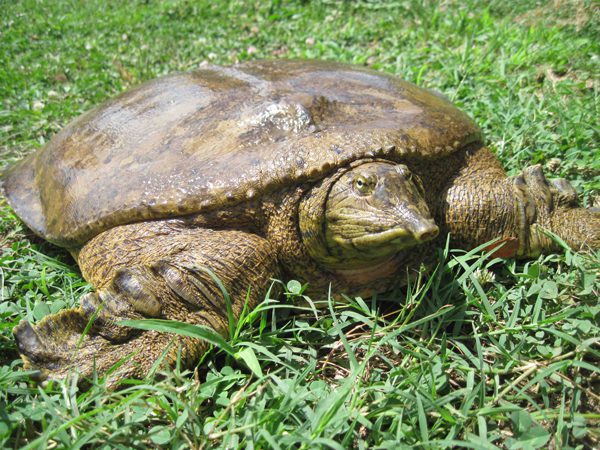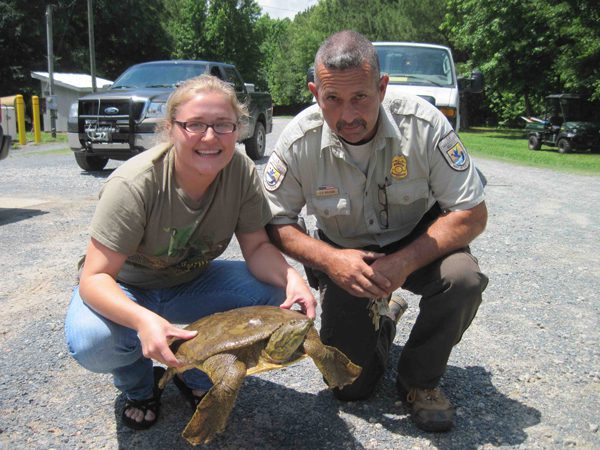Wildlife of the Rocky River: the spiny softshell turtle

The Rocky River begins in Iredell County and flows through Cabarrus, Stanly, Anson and Union counties. This part of our region is very close to South Carolina and you find some interesting critters here you don’t see in other parts of the central N.C. Piedmont. One distinctive species is the Gulf Coast spiny softshell turtle (Apalone spinifera aspera).
If you see a soft shell turtle, you won’t mistake it for anything else. Their shells are covered in sandpaper-like skin and they are flat, like a pancake. Their heads are long and they use their long, thin noses like a snorkel. You will occasionally see them basking, but they spend most of their time in the water. Generally, they are cautious and evasive.
The LandTrust for Central North Carolina has worked with a landowner to conserve a large farm right at the confluence of the Rocky and Pee Dee rivers on the Anson County side. Not much farther south is the Pee Dee National Wildlife Refuge.
Having let the manager on the Pee Dee National Wildlife Refuge, J.D. Bricken, know of our interest in these turtles, I was excited to get a text from him with a picture of one he had seen crossing a road. This turtle was huge, and may end up setting a state record in size. We took measurements and then let her go back where she was found. She was so large, in fact, that we suspected she was a non-native turtle that someone had released.

Two subspecies of spiny softshell are native to North Carolina: the eastern, which occurs in the far western mountains, and the Gulf Coast, found in the southern part of the state. Much farther south, just making it into South Carolina, is another species called the Florida softshell. Several other species of softshell turtle are found in Asia and occasionally bought as pets. Sometimes folks release the pet turtles when they get large or they tire of them. That can have negative effects on the native turtle population, which has to compete with them for resources.
It is important not to release nonnative species into the wild, so we can help make sure native ones persist in our rivers and lakes and fill the ecosystem roles they are designed for and have evolved to fulfill. Fortunately, the turtle we found turned out to be a native species – large as she was – illustrating how much we still have to learn about secretive species such as these.